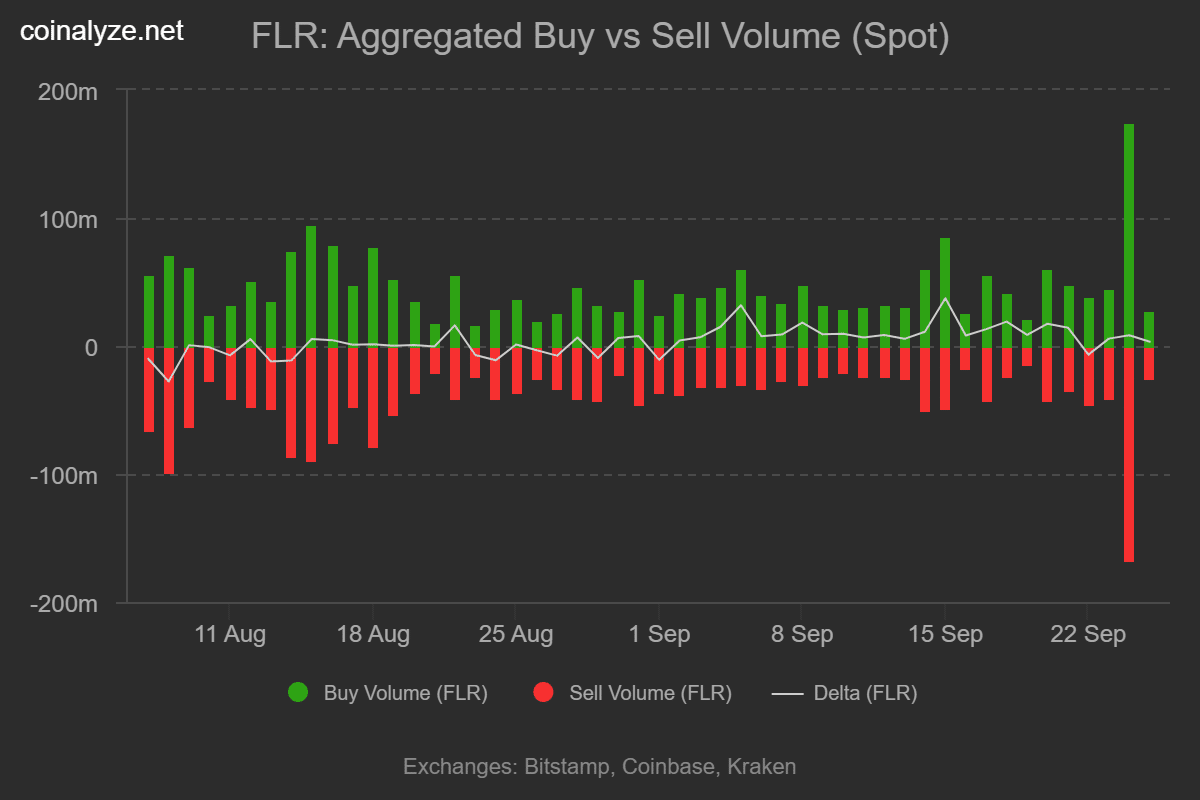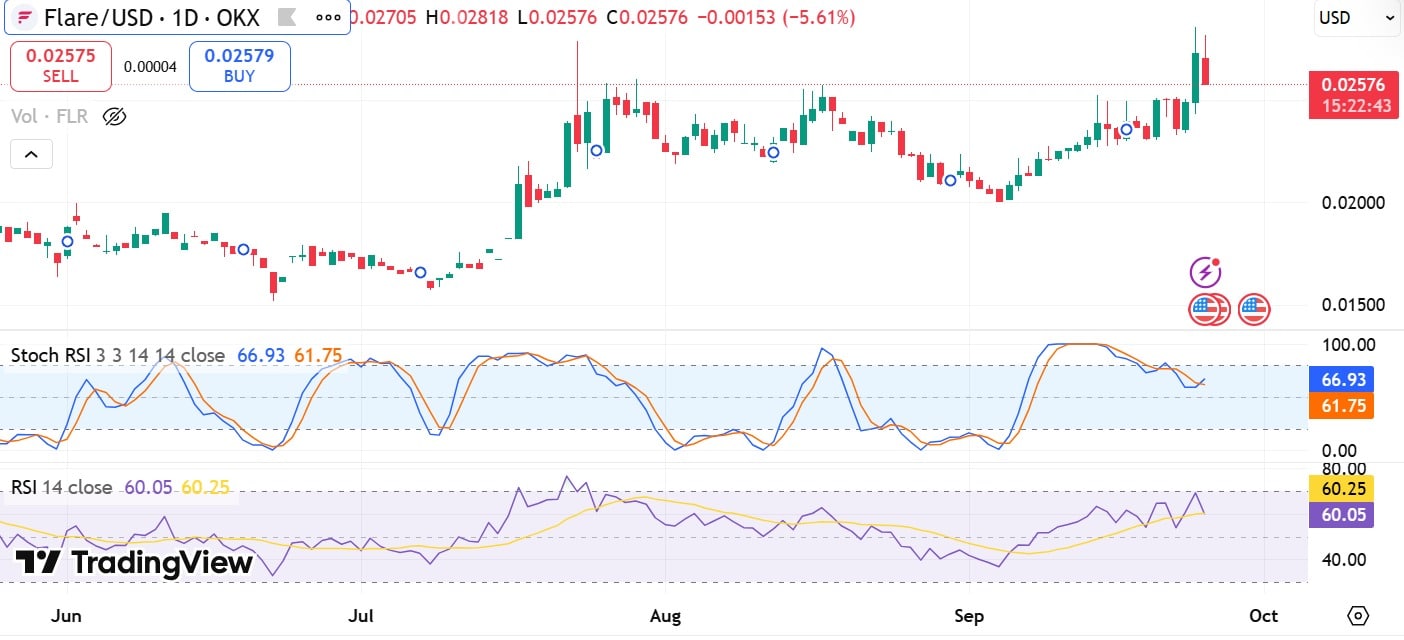Flare Network (FLR) spiked to $0.0285 after the launch of FXRP, boosting volume 347% to $52M and lifting market cap to $2.1B. The FXRP rollout enabled XRP to be used in DeFi, triggering aggressive accumulation and a short-term retracement to $0.025 as profit-taking increased.
-
FXRP launch triggered the rally
-
Volume surged 347% to $52M, with Buy Volume roughly $202M vs Sell $190M.
-
Key technicals: Stochastic RSI 66.9, RSI peaked at 69; support $0.023, resistance $0.0278–$0.0289.
FLR price surges after FXRP launch: volume +347% to $52M, market cap $2.1B; read the full analysis and near-term levels on COINOTAG.
What caused Flare Network’s price surge?
Flare Network (FLR) rose sharply after Flare launched FXRP, allowing XRP to be minted as an overcollateralized DeFi asset. This development unlocked new DeFi utility for XRP and prompted heavy spot accumulation, which pushed FLR to a nine-month high before a short retracement.
How did the FXRP rollout change market dynamics?
FXRP v1 converts XRP into a one-to-one, overcollateralized representation for DeFi, enabling minting, lending and DEX access on Flare. Market response was immediate: FLR hit $0.0285, then retraced to $0.025 as traders took profits. Volume jumped to $52 million (+347%), and market cap reached $2.1 billion. Sources: Coinalyze, CoinGlass, TradingView, COINOTAG (plain text).
How did retail buying and flows affect FLR?
Retail accumulation accelerated after FXRP’s debut. Buy Volume reached approximately $202 million versus $190 million in sells, producing a positive Buy–Sell Delta near 12 million FLR tokens. CoinGlass reported ten consecutive days of positive Spot Netflow, with netflow at about $222.5k at press time. These flows indicate strong spot interest but also rising distribution by profit-takers.
Source: Coinalyze (buy/sell data), CoinGlass (netflow), TradingView (indicators) — all mentioned as plain text.

Source: Coinalyze
Positive accumulation typically precedes sustained bullish moves, but visible profit-taking can cap short-term gains. The observed Buy–Sell Delta and elevated volumes point to strong interest that may support further upside if inflows persist.
Why are profit-takers relevant to FLR’s outlook?
Profit-taking increases selling pressure even amid strong inflows. As FLR climbed, holders who were previously underwater realized gains, contributing to sustained net outflows on some days despite positive cumulative netflow. This dynamic explains the rapid peak and subsequent pullback toward $0.025.

Source: CoinGlass
Can FLR sustain these gains?
Technically, momentum indicators show mixed but favorable signs. Stochastic RSI crossed bullish and reached 66.9, while RSI hit 69 before settling near 61. If buyer demand remains, FLR could reclaim $0.0278 and target $0.0289. Conversely, if selling pressure dominates, $0.023 is the critical support to watch.

Source: TradingView
Frequently Asked Questions
How high did FLR reach after FXRP launched?
FLR reached a nine-month high of $0.0285 before retracing to about $0.025, driven primarily by FXRP minting and heavy spot accumulation.
What on-chain indicators should traders monitor?
Monitor Buy–Sell Delta, spot netflow, exchange flows, Stochastic RSI and RSI. These metrics signal accumulation, distribution, and momentum shifts that determine short-term direction.
Key Takeaways
- FXRP launch catalyzed the move: FXRP enabled XRP utility in DeFi, prompting strong accumulation in FLR.
- Volume and flows confirm interest: Volume jumped 347% to $52M; Buy Volume outpaced Sell Volume and netflow remained positive.
- Watch levels and momentum: Reclaiming $0.0278 targets $0.0289; failure to hold may test $0.023 support. Monitor RSI and netflow closely.
Conclusion
The FXRP rollout materially changed Flare Network’s on-chain utility and sparked a notable FLR price rally. While volume and flow metrics support further upside, active profit-taking creates near-term risk. Traders should track buy/sell deltas, netflow, and momentum indicators to assess whether FLR can reclaim $0.0278 or fall back to $0.023. COINOTAG will continue to monitor developments and update coverage as new data emerges.
